Strengthening Indigenous Rights and Sustainability through Indigenous Tourism

By: Ricardo Campos, Executive DirectorIndigenous Tourism Network of Mexico (RITA) In Mexico, approximately 23.2 million people are Indigenous, which accounts for 19.4% of the total population of the country (INEGI, 2020). In 2001, after two centuries of invisibility and integrationist policies, the Mexican state officially recognized us as historical communities descended from pre-colonial societies. This recognition granted a series of collective and cultural rights, including the right to self-determination, the autonomy to decide forms of coexistence and organization, the right to apply our own normative systems, to elect authorities, to hold public office, to preserve our language, to access land ownership, and to make use of natural resources within our communities (Political Constitution of the United Mexican States, Art. 2). Furthermore, Mexico also signed and ratified ILO Convention 169 (1991), the United Nations Declaration on the Rights of Indigenous Peoples (2007), and the American Declaration on the Rights of Indigenous Peoples (2016), providing us with a framework of national and international rights as both individual and collective subjects. However, much remains to be done. In practice, Indigenous Peoples continue to face conditions of inequality, discrimination, and social vulnerability, resulting from historical processes of both ethnic and rural exclusion. The main issues we face are related to the lack of full realization of our rights to work, housing, healthcare, justice, and food (National Discrimination Survey, 2022). The lack of employment and economic resources to meet basic needs, inadequate healthcare, insufficient government support in social programs, limited opportunities for education, and discrimination based on our appearance, language, and the preservation of our traditions are the primary challenges that place us at a disadvantage. In our communities, we also face challenges related to the violation of our territorial rights due to various factors and actors. Agroindustry, monocultures, large-scale infrastructure projects, extractivism, mass tourism, the real estate industry, and organized crime act as external forces on our territories, causing internal conflicts, divisions, and territorial displacement. Indigenous collective lands are particularly vulnerable to the factors mentioned above. It is increasingly common to witness the indiscriminate sale of communal and agrarian lands to external agents, the displacement of populations due to violence from organized crime groups, and even the expropriation of lands by the state, often without adhering to the mechanisms of Free, Prior, and Informed Consent established in Indigenous Peoples’ rights frameworks. These conditions result in a high rate of migration among Indigenous and rural populations to agro-industrial, industrial, and tourist cities in Mexico and the United States. This migration fragments territories and alters our ways of life, but it also generates geopolitical conflicts between receiving states and the states that send migrants. In contrast, community cohesion, collective organization, and territorial governance are defense mechanisms that allow us to strengthen our territories internally, exercise our collective rights, maintain our food sovereignty, and uphold the right to dignified work within our communities, without having to migrate in search of job opportunities. In this context, the Indigenous Tourism Network of Mexico (RITA) was founded in 2003. It is a platform representing Indigenous Peoples’ communities, encompassing over 100 organizations across the country. Through our work, we strive to strengthen our cultures, conserve our territories, protect our biocultural heritage, and fully exercise our rights. At RITA, Indigenous tourism is not seen as the ultimate goal but as a strategy for community development with identity. Over the years, we have diversified our activities, and the guiding principles of our work today focus on improving the quality of life within our communities and exercising our rights as Indigenous Peoples. For over 20 years, our working model has enabled us to contribute to reducing migration by creating opportunities that strengthen the local economy. Additionally, we have increased our political participation and strengthened community governance in the defense of our territories and the building of peace processes. We have worked to ensure the exercise of the rights of Indigenous youth and women, the revitalization of our culture and traditional knowledge, as well as the contribution of our systems of knowledge and approaches to nature management in preserving biodiversity and combating climate change. On this journey, since 2021, we have established a strategic alliance with Land is Life, with whom we have found strong alignment in our missions, values, and objectives. This partnership has allowed us to achieve a series of advancements and results, including the following: In the face of a global context that is increasingly challenging for Indigenous Peoples and our territories, we know that the key to addressing the gaps of inequality, violence, and exclusion we face as Indigenous Peoples lies in coordination, collaboration, and the collective effort to continue contributing solutions for the maintenance of our biodiversity and the fight against climate change. At RITA, we are committed to continuing to strengthen and expand the joint actions that have been highly successful between Land is Life and RITA, and, through this, to continue working for the benefit of our Peoples and communities.
Reclaiming Our Food Systems: Agroecology in Indigenous Peoples Territories in East Africa
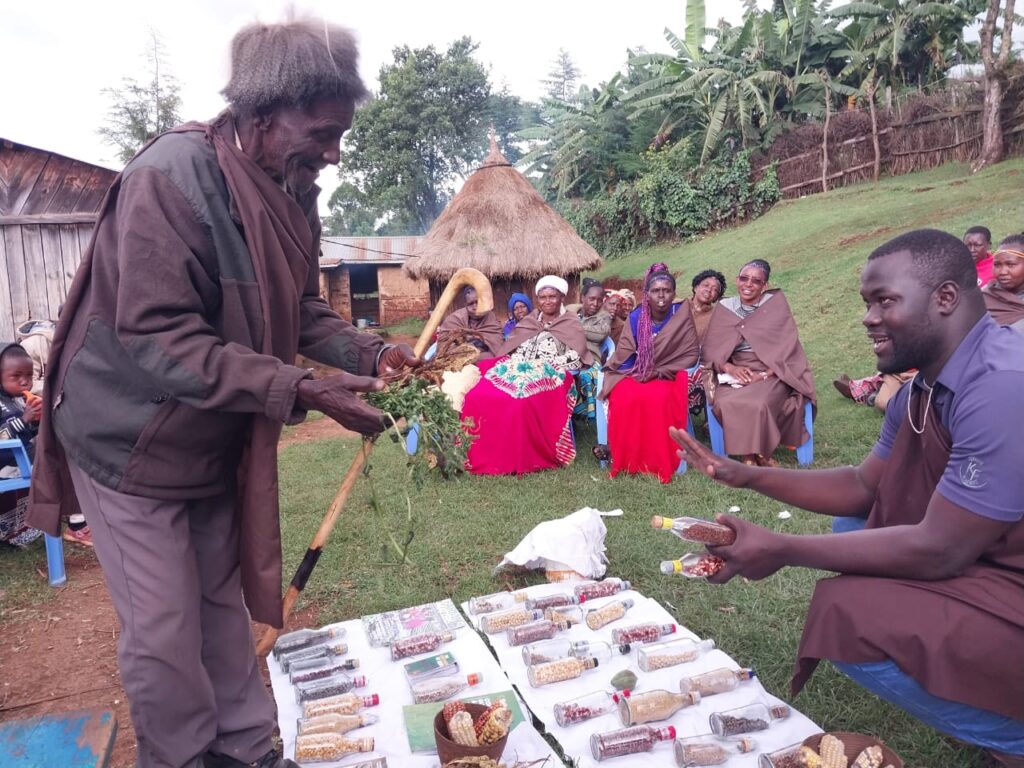
Indigenous Peoples’ in Eastern Africa are facing growing challenges due to resource exploitation, climate crises, and displacement, threatening their food sovereignty and cultural practices. In response, the Land is Life Food Security Program, rooted in agroecology, is empowering communities in Kenya, Tanzania, and Burundi. Through training in sustainable farming practices, biodiversity conservation, and intergenerational knowledge transfer, the program not only strengthens food systems but also supports gender equality and youth engagement. Indigenous Peoples across Eastern Africa continue to face deep marginalization, exacerbated by the discovery of valuable natural resources such as oil and gas. These discoveries often lead to the militarization of Indigenous territories as governments prioritize securing investments. Additionally, the push for carbon credits and tourism has further threatened Indigenous Peoples’s communities. Take, for instance, the violent evictions of the Maasai from Ngorongoro in Tanzania, the Ogiek from the Mau Forest in Kenya, and the Sengwer—a forest-dwelling community with a long history of coexisting with nature, now accused of forest destruction. The loss of land is not just a physical displacement; it is the loss of food sovereignty. Communities like the Endorois and Ogiek rely on forests for grazing and beekeeping, vital to their survival. These forced evictions, often violent, leave lasting physical and psychological scars. When displaced, Indigenous Peoples are forced to either assimilate into other communities, leading to cultural erosion, or struggle to survive on shrinking parcels of land, as seen with the Ogiek people now living in Mumberes, Baringo County, Kenya. This disruption not only threatens their way of life but undermines their sources of livelihood. Indigenous Peoples have co-existed with nature since time immemorial. The existence of an intricate totem system makes it inconceivable for Indigenous Peoples to destroy the very nature that they have a bond with. However, the introduction of industrial food production systems, reliant on synthetic fertilizers, has complicated their way of life. These systems are often supported by policies that criminalize traditional practices such as seed saving, sharing, and exchange—practices that have long been integral to Indigenous food sovereignty and ecological stewardship in East Africa. As the world grapples with multiple crises, Africa finds itself in a particularly dire situation. Despite owning 60% of the world’s arable land and having an environment conducive to food production, at least one in five Africans goes to bed hungry every day. According to the 2024 State of Food Security and Nutrition (SOFI) report, the continent remains home to the world’s hungriest people. Eastern Africa, in particular, has suffered from extreme weather events, including droughts, floods, and locust infestations, which have devastated food security, caused loss of life, and destroyed property. In 2019, Kenya was ravaged by locust swarms, severely impacting food access. In 2022, the country faced its worst drought in four decades, and in 2024, March brought massive floods. Tanzania also faced catastrophic flooding, which killed 58 people and affected over 126,000 others. In response to these challenges, Land is Life’s Food Security Program has been working to support Indigenous Peoples in Kenya, Burundi, and Tanzania. Rooted in agroecological principles, the program collaborates with the Sengwer, Batwa, Ogiek, and Endorois Indigenous Peoples’ communities to foster food systems transformation. Training sessions emphasize the value of Indigenous knowledge and promote intergenerational knowledge transfer. Participants learn climate-adaptive practices like sustainable land management, soil erosion prevention, and fertility retention through techniques such as contour farming. Biodiversity enhancement is also prioritized through intercropping and biological pest control, such as using onions and ginger to repel pests. The program also tackles gender imbalances in land ownership by creating safe spaces for bold discussions among women, where role-playing and gender analysis help reimagine a future where women control natural resources. Additionally, the initiative encourages the diversification of livelihoods, enabling Indigenous Peoples’ communities to move beyond reliance on livestock and embrace food cultivation. In schools, the project is reshaping the narrative around youth and agriculture by making food production engaging and fun. In school gardens, land tilling and vegetable planting are integrated with music and poetry, creating an enjoyable and educational experience for young people. The impact of the agroecology training within Indigenous Peoples’ communities has been overwhelmingly positive. Community members now have a deeper understanding of agroecological principles, the importance of healthy food, and the value of intergenerational knowledge transfer. The program has also spurred greater community engagement in policy processes, encouraging people to challenge prevailing narratives about Indigenous Peoples’ ways of life and their food systems. This initiative has fostered resilience across Kenya, Tanzania, and Burundi, creating a ripple effect that continues to strengthen communities. With its proven success, the project holds significant potential for expansion, paving the way for truly transformative food systems.
The Possibilities of Naming the World are the Possibilities of Caring for It: The importance of indigenous Peoples’ languages in the protection of knowledge and ecosystems.
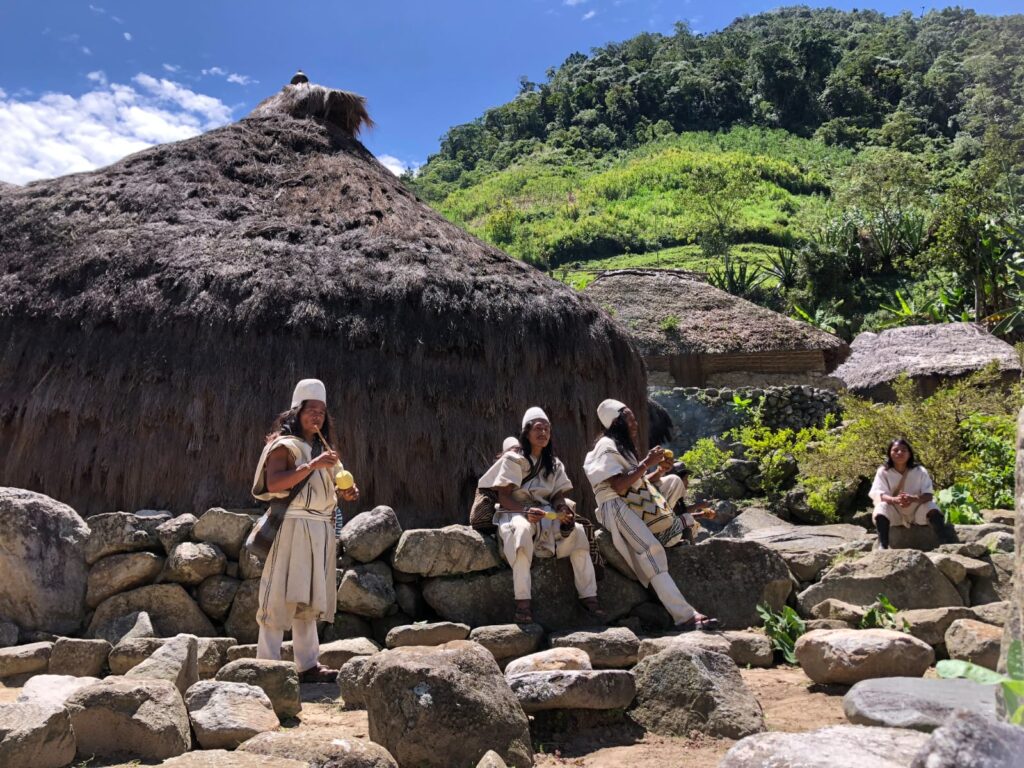
Indigenous Peoples languages not only strengthen social cohesion and the transmission of values and community practices, but they also preserve systems of knowledge essential for the safeguarding of the planet. Their preservation is crucial, not only for the cultural identity of each people but also for the balance and conservation of nature. By: Guriwun Torres* Indigenous Peoples’ languages are a reflection of the culture of their speakers, their cosmovisions, and knowledge. They contain wisdom about how, where, and when to use the resources and goods of nature, making them essential in ecological protection and conservation, as well as in the harmonious relationship between Indigenous Peoples and their environment. These languages are the main medium through which knowledge, the history of their Peoples, and their territories have been passed down from generation to generation, acting as custodians and sources of cultural heritage. They represent the very language in which the inherent relationship between the spiritual world and the material world is expressed, a vision that guides Indigenous Peoples’ understanding of nature, the universe, and everything contained within it. This knowledge has allowed for the preservation of biodiversity and ecosystems in various regions of the world. It is no coincidence that many areas with high biodiversity are also rich in cultural diversity, represented by Indigenous Peoples and linguistic diversity. A clear example of this is the Sierra Nevada de Santa Marta, ancestral territory of the Indigenous Peoples Arhuaco, Kogui, Wiwa, and Kankwamo, who speak three Indigenous Peoples’ languages: Ikun, Kogui, and Dámana. Its high level of endemism and biodiversity in flora and fauna, documented by biologists and ecologists, demonstrates how cultural practices and traditional knowledge have been fundamental in its conservation. From my experience as an Indigenous woman and as a biologist, I have found and understood that there is no more intimate and profound way to understand cosmovisions and knowledge than by exploring them through the language itself. The language guards deep layers of cultural knowledge. For example, in the Arhuaco people, when the Mamos (spiritual authorities) teach or explain an idea related to the cosmovision – whether it is about a natural phenomenon, an object, an animal, a plant, or a star – they do so in a language that is not everyday language, but one that is more precise and specialized. An example is the concept Seyn zare (seyn = related to the night, zare = past suffix), which literally translates as “when everything was darkness.” This expression refers to the beginning of time, when everything was darkness, and everything existed only in thought and spirit, when the norms that govern nature and the universe in the present began to be established. This word is often translated as “Law of Origin,” a concept fundamental to explaining the norms and laws that govern the mission and mandate of the Arhuaco People in the care of life. To understand this type of knowledge, it is not enough just to speak the language; a prior understanding and a broad mastery of the vocabulary are required to grasp and access these concepts. When it is necessary to comprehend these uncommon terms in everyday life, seeking someone with this knowledge, who can interpret and explain in a more accessible language, becomes an indispensable option. Therefore, the extent of knowledge can only be fully grasped to the degree that one’s understanding permits and as much as those with the wisdom are willing to share. When these concepts are translated without this level of depth, they are often oversimplified, losing key ideas and nuances. Protecting Indigenous Peoples’ languages is essential to preserving the richness and depth of ancestral wisdom. In the Arhuaco or Iku people, the language is called ikun, which means “to speak in the language of the Iku.” However, when it comes to transmitting knowledge and ideas, it is referred to as ga’kunamu, which literally translates to “carrier of the message/idea.” This reflects that the ideas explaining the cosmovision of all aspects surrounding the Arhuaco are contained in the ga’kunamu. Therefore, when an Arhuaco refers to their own language, they say niwi ga’kunamu, which can be translated as “our ideas,” “our thoughts,” or “our language,” depending on the context. All of these forms of knowledge are expressed and developed in everyday life, influencing collective decision-making and the defense of territory, which is the very manifestation of culture. Thus, the Arhuaco mission is to safeguard the natural balance of the planet through rituals, payments, dances, and the strict observance of the Law of Origin, which is transmitted through the language or ga’kunamu. These practices seek respect and reciprocity with Mother Earth, the universe, and all its beings, which constitute biodiversity and ecosystems. It is understood then that within the language resides the knowledge of biodiversity and the sustainable use of resources, encompassing everything from the most everyday aspects to the most complex elements of the cosmovision. This knowledge is deeply connected to the territories that Indigenous Peoples inhabit, conserve, and protect. Indigenous Peoples’languages carry the knowledge of the land inhabited by their speakers. The specificity in the naming of geographical features—rivers, lakes, lagoons—and the beings that make up the landscape—plants, animals, fungi, insects, rocks—not only reflect their uses but also their connection to the history and cosmogony of each being. This speaks to the complexity with which these cultures understand nature. For example, in the Ikun language, the puma (Puma concolor) is called gwiajina, a compound word whose literal meaning is “older brothers,” gwia = older brother, and the suffix jina = plural. Why are they called older brothers? For the Arhuaco cosmovision, these felines are the first inhabitants of the territory, considered Mamos, guardians of the kunsamu, knowledge and wisdom that are preserved in the mountains, high moors, and snowy peaks of the Sierra Nevada de Santa Marta, which are their Kunkurwas or ceremonial homes. Although most Indigenous Peoples do not have a written tradition, there are knowledge systems that have been documented in geoglyphs and paintings, whose shapes and
Statement on the Contemplated Resumption of Oil Extraction in Ogoni Land
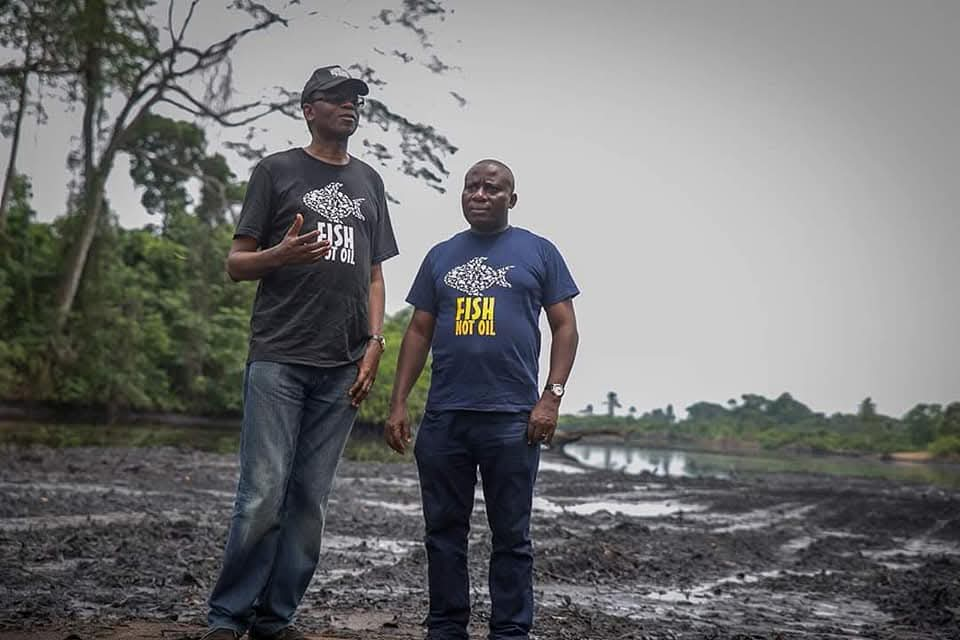
We endorse the statement from allied civil society organizations that, concerned about the catastrophic consequences of oil spills, gas flaring, and poor remediation efforts, which have left the land, water, and air severely polluted, condemn the planned resumption of oil extraction in Ogoniland, Rivers State. Concerned civil society organisations in the Niger Delta met at the Port Harcourt office of Environmental Rights Action/Friends of the Earth Nigeria to deliberate on the recent invitation by the office of the National Security Adviser to the President, Mr Nuhu Ribadu to some Ogoni leaders and stakeholders to a private meeting in Abuja to discuss the resumption of oil production in Ogoniland. While recognising and condemning the nations dependence on fossil fuel, it is however insensitive for this administration to open any form of discussion with handpicked group of Ogoni leaders for such talks, noting that the overall will of the majority of Ogonis is -paramount in this matter. The groups expressed their unequivocal condemnation of the planned resumption of oil exploration and production activities in Ogoniland. This decision disregards the enduring environmental, social, and economic injustices faced by the Ogoni people and undermines efforts toward sustainable development, environmental justice, community empowerment and cleanup of the devastated environment. Ogoniland has been a symbol of environmental degradation caused by decades of reckless oil exploitation and decrepit equipment. Reports, including the UNEP Environmental Assessment of Ogoniland of 2011, have documented the catastrophic consequences of oil spills, gas flaring, and poor remediation efforts, leaving the land, water, and air severely polluted. The livelihoods and health of the Ogoni people have suffered immeasurably, with no substantial accountability from the oil industry or adequate redress from the government. The groups explained that they had expected that this administration would have called for a multi stakeholder meeting in Ogoni land to listen to the plight of the Ogonis and also agree with them on how best to tackle the poverty and hunger occasioned by their loss of livelihoods caused by years of pollution and resultant poisoning of their land and waters. The forum noted with dismay that two major issues-June 12 and the Ogoni struggle were plaguing the nation when democracy was restored in 1999. The matter of June 12 has been settled with the federal government conferring a national honor of GCFR on MKO Abiola and also recognizing him as the hero of democracy. It is time, Ken Saro-Wiwa is recognized and honoured as the hero of the environment and given his due honour. Despite numerous calls for justice and transparency, the Nigerian government has been slow in the implementation of the UNEP report recommendations to clean up the land effectively. It is also on record that the government of Nigeria is reluctant to contribute to the ongoing cleanup of Ogoniland and is keeping a blind eye to the atrocious continuation of destructive oil activities across the Niger Delta. The attempt to resume oil extraction in a region already ravaged by environmental neglect further exacerbates the suffering of the people and is an affront on their right to a safe environment. It also disregards their right to free, prior, and informed consent, a fundamental principle under international law. We demand as follows: Halt all plans for resumption of oil extraction in Ogoniland until there is meaningful consultation with the Ogoni people and full remediation of the damaged environment. That not one more oil well should be drilled in the Niger Delta and the government, and the oil companies should commence immediate and total cleanup of the region. One trillion United States Dollars should be earmarked for immediate clean up of the Niger Delta and compensation for loss of livelihoods. Immediate review of the Kangaroo Military trial and execution of ken Saro-Wiwa with other martyrs and their exoneration. Immediate and unconditional release of the confiscated Ken Saro-Memorial Bus sculpture held by Nigeria Customs since 2015. Full Implementation of the UNEP Report and ensuring that the clean-up and restoration of Ogoniland are prioritized and carried out transparently and effectively. More funding should be allocated to HYPREP to hasten up their actions on the clean up. Ensure justice for the Ogoni People by addressing historical grievances, including compensation for environmental and economic losses and accountability for decades of ecological destruction. Community participation and a guarantee that decisions affecting Ogoniland follow the respect for the Free, Prior, and Informed Consent (FPIC) of the communities. Holding oil companies, particularly Shell, accountable for past environmental damages and human rights violations. Demilitarization of the Niger Delta and an end to the intimidation and harassment of environmental activists and local communities. Enforcing strict regulations on oil companies operating in Nigeria. Halt all discussions on divestment until the polluted Niger Delta region is cleaned up. Transitioning to renewable energy and reducing dependence on fossil fuels to mitigate environmental harm. The contemplated resumption of oil operations in Ogoniland poses a significant threat to the fundamental human rights of the Ogoni people and negates Nigeria’s effort at tackling climate change. These include the right to a clean and healthy environment, the right to health, and the right to life. Any attempt to impose extractive activities without addressing these historical injustices will only deepen the mistrust between the government, oil companies, and local communities. The resumption of oil activities in Ogoniland is not only a betrayal of the Ogoni struggle but also a threat to the environment and future generations and a false hope that colonial extractivism promotes positive development. We stand in solidarity with the Ogoni people in their fight for justice and sustainable development. Signed: Miideekor Environmental Development Initiative-MEDI Health of Mother Earth Foundation-HOMEF Corporate Accountability and Public Participation Africa-CAPPA Ogoni Solidarity Forum-Nigeria South South Youths Initiative Peoples Advancement Centre Environmental Rights Action Kebetkache Women Development & Resource Centre Social Action We The People Africa Network for Environment and Economic Justice-ANEEJ Lekeh Development Centre Rainbowwatch Development Centre Kalop Environmental Centre Pilex Centre CEE-HOPE HEDA Resource Centre Peace Point Development Foundation Civil Society Legislative Advocacy Centre-CISLAC
Defensa de los derechos de las mujeres Indígenas a través del sistema de las Naciones Unidas
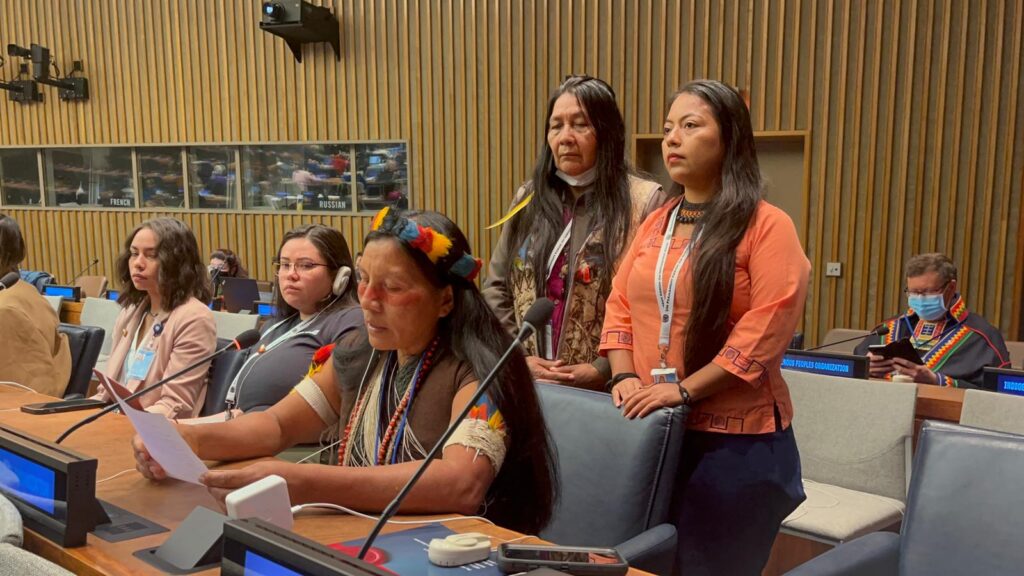
Certificado por la Universidad de Arizona Desarrollado en colaboración entre Land is Life y la Universidad de Arizona, este curso ofrece una oportunidad de aprendizaje para mujeres indígenas de las siete regiones socioculturales, brindándoles experiencia práctica en la interacción y navegación dentro del sistema de derechos humanos de las Naciones Unidas. Los estudiantes aprenderán de ponentes de alto nivel, incluidos Relatores Especiales de la ONU, líderes Indígenas y académicos distinguidos. Fechas tentativas para las presentaciones de los ponentes invitados: Semana Fecha Tema Semana 1 Marzo 20 de 2025 Marco Legal Semana 2 Marzo 27 de 2025 Declaración de las Naciones Unidas sobre los Derechos de los Pueblos Indígenas (DNUDPI) Semana 3 Abril 3 de 2025 Abogacía: Mecanismo Experto sobre los Derechos de los Pueblos Indígenas y el Foro Permanente de las Naciones Unidas para las Cuestiones Indígenas. Semana 4 Abril 10 de 2025 Procedimientos Especiales Semana 5 Abril 17 de 2025 Órganos de Tratados Semana 6 Abril 24 de 2025 Examen Periódico Universal (EPU) Semana 7 Mayo 1 -7 de 2025 Presentaciones Finales de los Participantes
Open call for applications Online course: Advocating for Indigenous Women’s Rights through the UN System.

Certificate course offered by the University of Arizona Developed in collaboration between Land is Life and the University of Arizona, this course provides a learning opportunity for Indigenous women from across the seven socio-cultural regions to gain hands-on experience in engaging with and navigating the United Nations’ human rights system. Students will learn from high-level guest speakers, including UN Special Rapporteurs, Indigenous leaders, and distinguished scholars. Tentative dates for the guest speakers’ presentations: WEEK DATE TOPIC Week 1 March 20, 2025 Legal Framework Week 2 March 27, 2025 United Nation Declaration on the Rights of Indigenous Peoples (UNDRIP) Week 3 April 3, 2025 Advocacy:Expert Mechanism on the Rights of Indigenous Peoples and the United Nations Permanent Forum on Indigenous Issues Week 4 April 10, 2025 Special Procedures Week 5 April 17, 2025 Treaty Bodies Week 6 April 24, 2025 Universal Periodic Review Week 7 May 1-7, 2025 Final Presentations by Participants
An important announcement
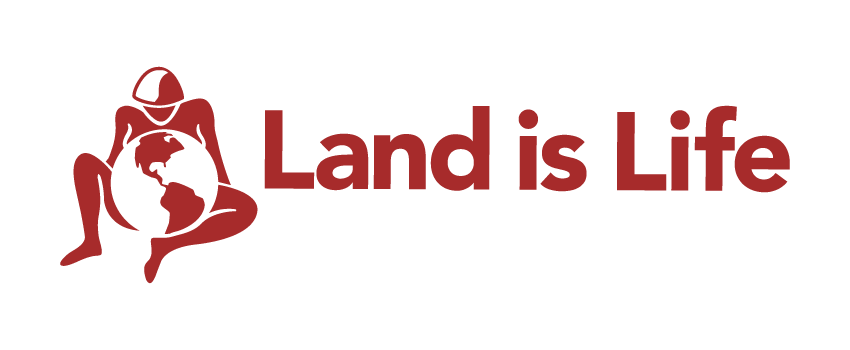
Dear Friends, After an extensive search process, in which we received over 100 applications from around the world, Land is Life’s Board of Directors is pleased to announce the appointment of Luisa Castaneda as our next Executive Director, effective January 1, 2025. In her new role, Luisa joins us in our mission to advance the self-determination and collective rights of Indigenous Peoples in the seven socio-cultural regions of the world. We are confident that under her leadership, the organization’s success and impact in achieving its mission and vision will continue to flourish. Luisa was born and raised in Puerto Boyacá, Colombia. She has a Master’s in Law from the Libre University, Colombia and an LLM in Comparative Law and Economics from the University of Turin and IUC, Italy. Currently, as a Vanier scholar, she is finalizing her Doctorate in Comparative Law at McGill University. Luisa has over a decade of experience in supporting Indigenous Peoples: advocating for the territorial rights of the Arhuaco People in Colombia through strategic litigation; championing food sovereignty as part of the Indigenous Peoples Unit at FAO; and working as an Advisor to the Chairperson of the UN Permanent Forum on Indigenous Issues, Dario Mejia Montalvo. Luisa joined the Land is Life team in 2023, and has demonstrated that her commitment and vision make her an exceptional individual for the role of Executive Director. We would also like to express our appreciation to Land is Life’s founding Director, Brian Keane, for leading the organization during this transition period, during which he expanded our work to protect Indigenous Peoples’ rights defenders in the Amazon, and created and launched our Indigenous Women’s Program, Indigenous Women’s Fellowship, and Food Sovereignty and Security Program. Brian will rejoin Land is Life’s Board of Directors, and continue working with the organization in the role of Senior Advisor. We invite you to join us in welcoming Luisa Castaneda and look forward to your continued support and engagement as we embark on this exciting new chapter. Mariam Wallet Med Aboubakrine Board Chair Land is Life
Stop the 11,000 MW Siang Dam: Honor Indigenous Rights In Arunachal Pradesh, India
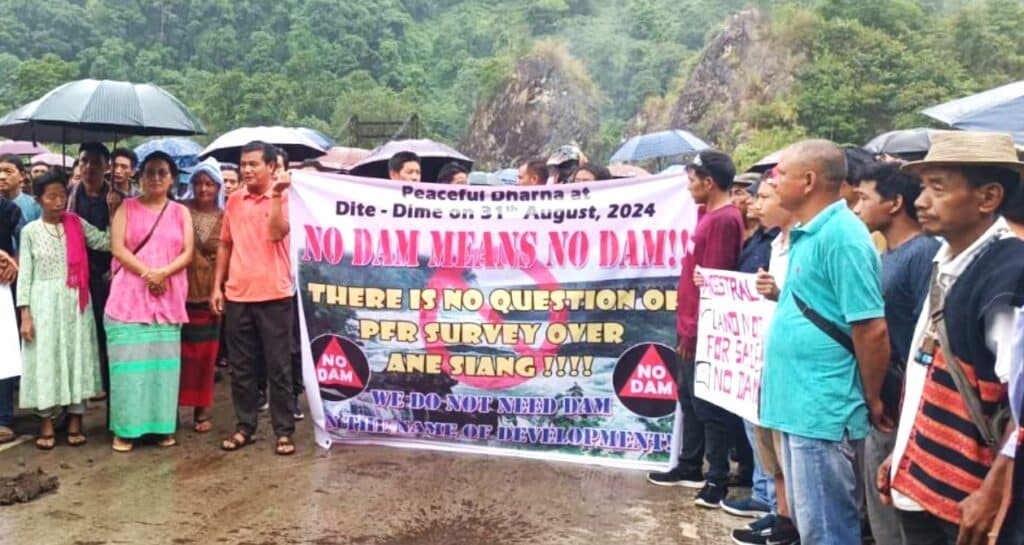
Land is Life calls on the Government of India to reconsider the pursuit of the 11,000 MW Siang Hydroelectric Project and other large-scale dams in Arunachal Pradesh and across North East India. It is deeply concerning that the Government of India is pushing forward with the construction of the Siang Dam on the Siang River without securing the free, prior, and informed consent of the Adi and other affected Indigenous Peoples in Arunachal Pradesh. The Adi tribe has called for the recognition of their rights, urging consideration of the potential impacts of the dam on their land, livelihoods, culture, and identity, particularly regarding involuntary displacement, land grabbing, the influx of non-Indigenous populations, and militarization. They have further called for a halt to the dam’s construction on their ancestral lands and territories. The Government of Arunachal Pradesh’s notification on December 6, 2024, to deploy Central Armed Police Forces in Siang District to facilitate the Pre-Feasibility Study of the Siang Dam has alarmed the Adi people. They view this notification as a direct attack on democratic decision-making processes in development and as an undemocratic resort to force. The Adi people are also deeply concerned about the potential for repressive actions and other human rights violations due to the militarization of their territory. The proposed 11,000 MW Siang Dam would have severe social, environmental, and cultural consequences for the Adi Indigenous Peoples and their land. In addition to the local impacts, the dam would cause significant downstream effects, such as widespread flooding in Assam. The disaster risk posed by the dam is further heightened by the region’s high seismic activity and the effects of climate change, including glacier melting and deforestation in the Himalayan region. Land is Life urges the Government of India to halt the 11,000 MW Siang Hydroelectric Project and to cease the militarization of Indigenous territories for dam construction. The demands of the Adi Indigenous Peoples must be fully respected, in line with the UN Declaration on the Rights of Indigenous Peoples, 2007.
In Memoriam Leonard Imbiri

On November 23, at 1:23 am, our brother Leonard Imbiri passed away. Leo lived his life in a good way, struggling against injustice, working for future generations, and bringing hope to the Indigenous Peoples of Papua. Leo was part of the Land is Life family for over two decades. As Executive Director of Yayasan Anak Dusun Papua (YADUPA), and Chair of Dewan Adat Papua (Papua Customary Council), he worked tirelessly to defend human rights and advance the self-determination of the forgotten Peoples of West Papua. Leo made it a priority to build the capacity of, and support, Indigenous women and youth; reminding us of the key role that women play in the struggles of the Papuan Peoples, and the importance of nurturing the development of Papua’s future leaders. Leo was fearless. He continued his work – always moving forward – despite continuous threats and harassment. He brought the voices of the Papuan people to those in power in Jakarta, New York and Geneva. He traveled the world to forge alliances with other Indigenous Peoples, touching the lives of countless Indigenous leaders working under similarly dangerous conditions. Wherever he went, Leo brought smiles to the faces of everyone he met. He was full of humor, humility, and optimism. Leo’s work will carry on. His legacy will grow.We mourn the passing of our good friend. We celebrate his life. We send our prayers and condolences to his family.Papua Merdeka!
Bittersweet Sugar in Papua
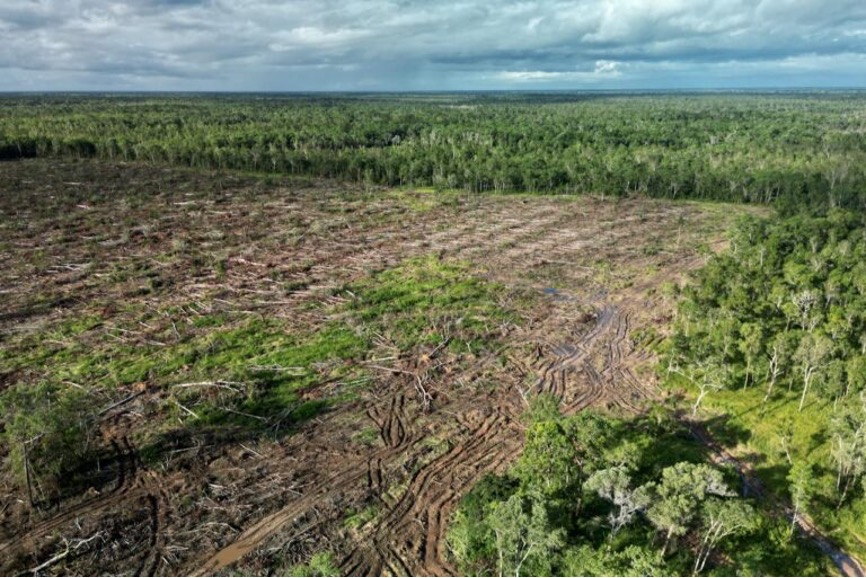
Deforestation for sugar projects in Merauke, Source: Yayasan Pusaka Sugar is often synonymous with sweetness, enhancing and strengthening the flavor of food. But will the same outcome occur in Papua, where the land and its Indigenous Peoples are increasingly being eroded for the interests of the National Sugar and Bioethanol Development Project? The land of Papua has long been a target for various parties seeking to control and exploit its resources—not only what is on the surface but also what lies beneath the earth. This often disregards the existence of the Indigenous Papuan People, who have managed and protected the land for generations. One thing that continues to grow stronger over time is the government’s ambition to develop large-scale agricultural and plantation lands in Papua. Looking back, this ambitious project was initiated in 2006 when former President Susilo Bambang Yudhoyono declared the Merauke Integrated Rice Estate project in Merauke Regency, Papua Province. This involved allocating 3.2 million hectares of land to be converted into rice fields and plantations. The project ultimately failed and was replaced in 2010 by the Merauke Integrated Food and Energy Estate (MIFEE), which allocated 2.5 million hectares and added energy elements such as wood chips and palm oil to attract investors. Under President Joko Widodo’s administration, the government re-declared the Food Estate project in Papua, with the aim of developing corn, rice fields, and sugarcane plantations across West Papua and South Papua Province. Additionally, through Presidential Decree Number 15 of 2024, concerning the Task Force for the Acceleration of Sugar and Bioethanol Self-Sufficiency in Merauke Regency, South Papua Province, the government has outlined the implementation of the National Sugar Self-Sufficiency and Bioethanol Provision Program. This mega-project is already underway, with 2 million hectares of land reserved for development, placing it within the National Strategic Project and Special Economic Zone scheme. Symbolic opening ceremony by President Joko Widodo, Source: Media The seriousness of this government initiative is evident, given that Indonesia is still a sugar-importing nation. In 2023, sugar imports totaled 5 million tons, with Thailand, India, Brazil, and Australia as the largest suppliers. Meanwhile, national sugar production stands at only 2.4 million tons per year, a figure that continues to decline. National sugar requirements in 2023 reached 3.2 million tons per year, meaning that imports are currently the only solution to this deficit. This situation is also tied to Indonesia’s commitment to national energy independence, with a focus on new renewable energy sources. In 2025, Indonesia aims for a renewable energy mix of 23%, which will increase to 31% by 2030. This energy transition is expected to be fueled by biodiesel from palm oil and bioethanol from sugarcane. These two major goals—achieving self-sufficiency in sugar production and advancing energy independence—are the driving forces behind the government’s push for this large-scale project. However, the government’s claims of eradicating poverty and overcoming the backwardness of Papuan society are often used to legitimize these development projects in the region. This national-scale project places new pressure on South Papua, a province newly formed in 2022 after the expansion of Papua Province under Law Number 14 of 2022. South Papua consists of four regencies: Merauke, Boven Digoel, Mappi, and Asmat. As a new province, South Papua must prioritize development for its people. However, it is currently being forced to accommodate the mega Food Estate Project intended for rice and sugarcane cultivation. Haji Isam, owner of Jholin Group (middle with hat and black glasses), guarded by armed military in Food Estate Location Name of Company Concession (Ha) Allocation PT Global Papua Abadi 30.777 Sugar cane plantation, sugar mill and bioethanol PT Andalan Manis Nusantara 60.786 Sugar cane plantation, sugar mill and bioethanol PT Semesta Gula Nusantara 66.056 Sugar cane plantation, sugar mill and bioethanol PT Borneo Citra Persada 50.772 Sugar cane plantation PT Global Papua Makmur 60.364 Sugar cane plantation, sugar mill and bioethanol PT Murni Nusantara Mandiri 52.395 Sugar cane plantation and sugar mill PT Berkat Tebu Sejahtera 60.342 Sugar cane plantation PT Agrindo Gula Nusantara 60.679 Sugar cane plantation PT Sejahtera Gula Nusantara 60.606 Sugar cane plantation Company operated in Cluster 3 Several large companies, including WILMAR, KPN Corporation, Jhonlin, and First Resources, have also committed to partnering with the government through the PTPN Corp holding in this consortium. Consent from Indigenous Peoples Indigenous Peoples in South Papua are heavily dependent on forests. However, their land is increasingly threatened by the large-scale privatization and development projects carried out by the government and private sector. Indigenous Peoples claim they were not properly informed or consulted about the food estate plan, and many were shocked to learn of the land clearing operations. As customary landowners, they feel pressured to support the government’s grand plan. It appears they have no choice but to accept the loss of their land and forests, which have sustained them for generations. Papuan Indigenous Peoples traditionally rely on sago as their primary food source, not rice. Forcing Papuan land to become a rice producer, by replacing forests and sago with rice fields, will disrupt the community’s wisdom, production and consumption patterns, and ultimately their traditions. Harvesting Sago as collective efforts of Papuan Indigenous Peoples. Source: Kompas This situation seems like an ongoing tragedy—Indigenous Peoples will watch from the sidelines as development unfolds, with no direct involvement as both actors and beneficiaries of this development. Meanwhile, the government and private sector continue to promise progress and prosperity, yet in reality, poverty, backwardness, and hunger persist in Papua. The loss of forests and customary land in Papua, and the uprooting of Indigenous Peoples from their culture and customs, seems inevitable, while prosperity remains a distant dream for them. So, will this project bring sweet sugar or merely the bitter dregs of sugarcane for the indigenous Papuan people?